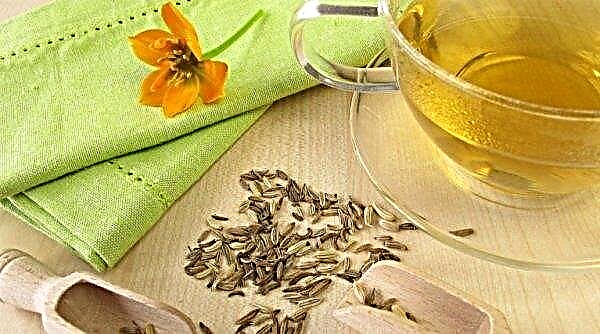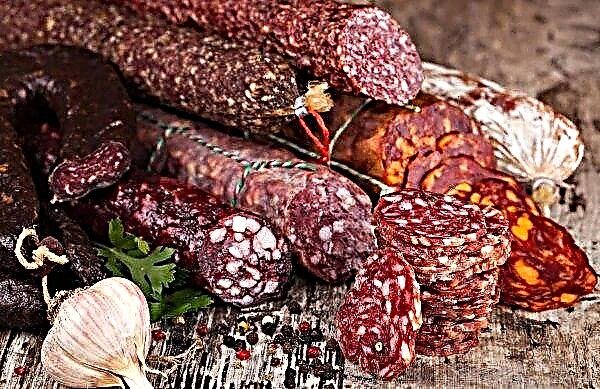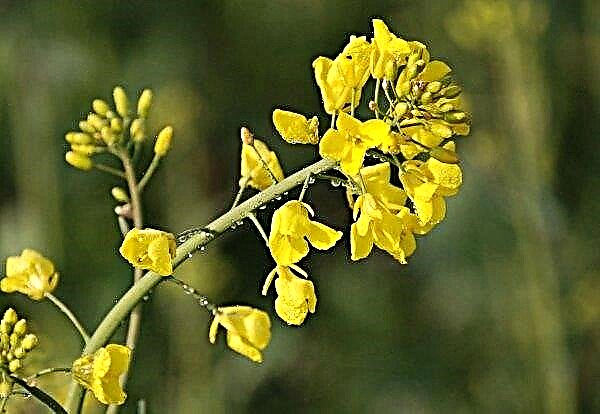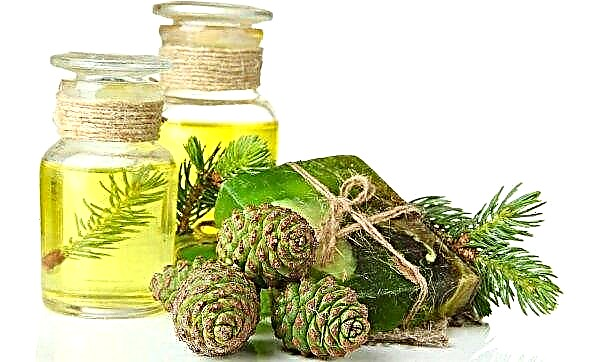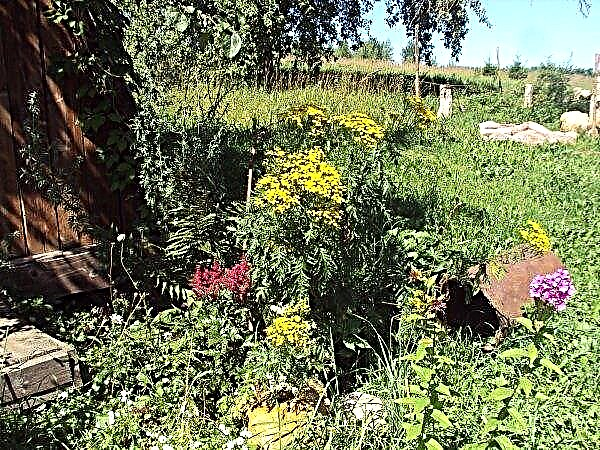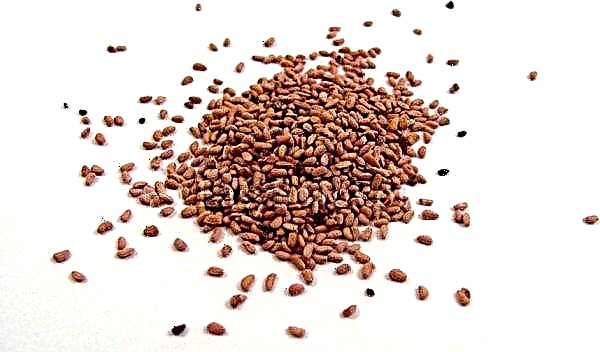One of the most popular spice plants in many countries is cilantro. It has a rich chemical composition, due to which it is able to exert a number of beneficial effects on the human body.
Cilantro: a biological description
Cilantro is the leafy part of the spicy herbaceous plant coriander. This annual has a fusiform root, a straight stem, with branches at the top. It reaches a height of 40–70 cm. The leaves of this plant have the shape of wide lobes, dissected. Grow on long stalks. Greens are very similar in appearance to parsley, it is often often confused with it.

Grass blooms in June-July with inflorescences in the form of complex umbrellas. The flowers may be white or pink. After flowering, oxyfruit are formed.
The exact origin of the grass is unknown. Presumably, her wild relative came from the Eastern Mediterranean. Spicy culture was brought to Europe in the 1st century. BC e. And only from the XV – XVII centuries. residents of America, Australia and New Zealand learned about it.
Did you know? About 3 thousand years ago, cilantro grew in the hanging gardens of Queen Amitis in Babylon. It was planted as a natural flavor.
Beneficial features
- It is known about such beneficial effects of cilantro on the human body:
- replenishes the reserves of vital vitamins and minerals;
- improves the digestive tract;
- increases appetite;
- helps to digest food that is heavy for the digestive tract (fatty, protein);
- improves the reproductive system of men, in particular, positively affects potency;
- cleanses excess fluid and toxins;
- removes cholesterol;
- helps to reduce pressure;
- beneficial effect on the organs of vision;
- relieves toothache and inflammation of the oral mucosa;
- improves mood;
- normalizes sleep;
- has a choleretic effect;
- helps lower blood sugar.

The chemical composition of cilantro
The beneficial properties possessed by cilantro determine its chemical composition.
Here is what is contained in 100 g of this plant:
- 37% of the daily requirement for a person of vitamin A;
- 78% beta carotene;
- 258% vitamin K;
- 30% vitamin C;
- 15% folic acid;
- 16% vitamin E;
- 11% vitamin B5;
- as well as vitamins B1, B2, B4, B6, PP.
The greens are rich in potassium (21%), manganese (21%), copper (22%). In smaller amounts, calcium, magnesium, sodium, phosphorus, iron, selenium, zinc are present. Of organic acids, cilantro contains palmitic, stearic, palmitoleic, oleic, linoleic, omega-6.
Did you know? Cilantro is widely used in Indian cuisine. The Indians attribute to her the properties of a powerful aphrodisiac, and also believe that she strengthens male power and makes the body strong.
Calorie content and BJU
For those who follow the calorie content of dishes, it will be interesting to know how many calories are in cilantro. This is a low-calorie product, in 100 grams it contains only 23 kcal.
The nutritional value of the herb is as follows:
- protein - 2.2 g;
- fat - 0.5 g;
- carbohydrates - 3.8 g;
- dietary fiber - 2.9 g;
- ash - 1.5 g;
- water - 93 g.
When drying greens, the amount of carbohydrates increases to 55 g, and therefore, calorie content becomes higher - 215 kcal.

How to eat cilantro
In cookery, coriander leaves of table varieties are used, which are removed during the formation of the rosette before the shooting. Cilantro has a pleasant spicy smell and a harsh taste. Most often, this spice is seasoned with meat and fish dishes, put as one of the ingredients of salads. It is also added to the first dishes (pea, bean soups), sauces, sausages, pastries.
Important! Since cilantro has a very pronounced specific taste and aroma, it is necessary to put very little in dishes.
Precautions and contraindications for the use of cilantro
Despite the rich chemical composition and a huge range of beneficial effects, this spicy herb has harmful properties. Some people need to eat it with caution or exclude it from the menu completely.
- Greens are contraindicated in the following categories of persons:
- pregnant, because the substances that make up its composition are able to thicken blood;
- women who are breastfeeding, as the spice spoils the taste of breast milk;
- diagnosed with thrombophlebitis, hypertension, thrombosis, increased acidity of the stomach, coronary heart disease, diabetes mellitus;
- in the past, having suffered myocardial infarction;
- having individual intolerance.

Cilantro can be harmful if consumed in large quantities. In this case, it provokes a cycle disorder in women and a deterioration in potency in men, impairs sleep and weakens memory.
Important! An adult healthy person is recommended to consume no more than 35 g of cilantro per day.
So, cilantro is a healthy spice with a rich chemical composition. But you need to use it sparingly: firstly, because it can spoil the taste of the dish with its sharp taste and smell, and secondly, because it can lead to negative reactions from the body.

